Calls to Action
NATIONAL SACRED PLACES PRAYER DAYS JUNE 20-22, 2014
Published
10 years agoon
By
Rudy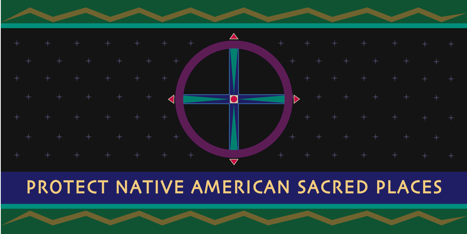


Washington, DC (6/19/14)—Observances and ceremonies will be held across the land on June 20-22 to mark the 2014 National Days of Prayer to Protect Native American Sacred Places. The observance in Washington, D.C. will be held on Friday, June 20, at 8:30 a.m., on the United States Capitol Grounds, Senate East Front Grassy Area Nine (see details under Washington, D.C. in the alphabetical listing by state on the following pages).
Descriptions of certain sacred places and threats they face, as well as times and places for public commemorations are listed in these pages. Some of the gatherings highlighted in this release are educational forums, not religious ceremonies, and are open to the general public. Others are ceremonial and may be conducted in private. In addition to those listed below, there will be observances and prayers offered at other sacred places that are under threat and at those not endangered at this time.
“Native and non-Native people gather at this Solstice time for ceremonies and events to honor sacred places, but everyone can honor these precious lands and waters all the time by simply respecting them and not allowing them to be harmed,” said Suzan Shown Harjo (Cheyenne & Hodulgee Muscogee). She is President of The Morning Star Institute, which organizes the National Sacred Places Prayer Days. “Observances are necessary,” she said, “in order to call attention to Native Peoples’ myriad struggles with developers who are endangering or destroying Native sacred places.”
The U.S. Supreme Court ruled in 1988 that there is no constitutional or statutory cause of action to defend Native sacred places. “Native Peoples are the only people or group in the U.S. who do not have a door to the courthouse to protect sacred places or site-specific ceremonies,” said Ms. Harjo. “That must change as a simple matter of fairness and equity. Sadly, the Obama Administration has backed developers that are desecrating sacred places and has done little to protect sacred places. The very least it can do is ask Congress to enact a statutory right of action.”
The National Congress of American Indians, the largest national Indian organization, has called for a statutory cause of action and a strengthened Executive Order on Indian Sacred Sites, and has instructed federal agencies how they can use existing laws and policies to protect Native sacred places. The U.N. Special Rapporteur on the Rights of Indigenous Peoples has called on the U.S. to consult with and return sacred places to Native Peoples.
During his 2008 presidential campaign, then-Senator Obama addressed this issue in his Native American policy platform for religious freedom, cultural rights and sacred places protection: “Native American sacred places and site-specific ceremonies are under threat from development, pollution, and vandalism. Barack Obama supports legal protections for sacred places and cultural traditions, including Native ancestors’ burial grounds and churches.”
The growing disparity between the campaign’s promises and the administration’s actions has dismayed many Native Peoples. The Forest Service, Justice Department and other agencies have vigorously attacked Native sacred places and Native Peoples are asking them to stop.
At the end of 2012, five federal entities – Defense, Interior, Agriculture, Energy and the Advisory Council on Historic Preservation – signed a five-year Memorandum of Understanding “to improve the protection of and tribal access to Indian sacred sites through improved interdepartmental coordination and collaboration.” The MOU does nothing of substance to protect sacred places, but provides for recommendations and a report by the end of 2017, the first year of the next Administration.
“The White House should direct the MOU agencies and others to review and report on the manner in which they acquired jurisdiction regarding Native American sacred places and whether such jurisdiction was taken with or without Native Peoples’ free, prior and informed consent,” said Ms. Harjo. “If the White House won’t do it, the agencies should assign the task to themselves. And someone needs to inform the State Department, which opines that consultation is consent, that consent means consent.”
The UN Declaration on the Rights of Indigenous Peoples, Article 11, Section 2, states that countries “shall provide redress through effective mechanisms, which may include restitution, developed in conjunction with indigenous peoples, with respect to their cultural, intellectual, religious and spiritual property taken without their free, prior and informed consent or in violation of their laws, traditions and customs.”
The 2013 observances are the eleventh of the National Prayer Days to Protect Native American Sacred Places. The first National Prayer Day was conducted on June 20, 2003, on the U.S. Capitol Grounds and nationwide to emphasize the need for Congress to enact a cause of action to protect Native sacred places. That need still exists.
Prayers will be offered for the following sacred places, among others:
Antelope Hills. Apache Leap. Badger Two Medicine. Badlands. Bear Butte. Bear Lake. Bear Medicine Lodge. Black Hills. Black Mesa. Blue Lake. Boboquivari Mountain. Bunchgrass Mountain. Cave Rock. Chief Cliff. Coastal Chumash Sacred Lands in the Gaviota Coast.Cocopah Burial and Ceremonial Grounds. Coldwater Springs. Colorado River. Columbia River. Deer Medicine Rocks. Dzil Nchaa Si An (Mount Graham). Eagle Rock. Everglades.
Fajada Butte. Ganondagan. Great Mound (Mound Bottom). Gulf of Mexico. Haleakala Crater. Hatchet Mountain. Hickory Ground. Holy Mountain. Hualapai Nation landforms in Truxton and Crozier Canyons. Indian Pass. Kaho’olawe. Kasha-Katuwe. Katuktu. Kituwah. Klamath River. Kumeyaay Bands Burial and Ceremonial Grounds. Lake Superior. Luiseno Ancestral Origin Landscape. Mauna Kea. Maze. Medicine Bluff. Medicine Hole. Medicine Lake Highlands. Medicine Wheels. Migi zii wa sin (Eagle Rock). Mokuhinia. Moku’ula. Mount Shasta. Mount Taylor. Mount Tenabo. Nine Mile Canyon.
Ocmulgee Old Fields and National Monument. Onondaga Lake. Palo Duro Canyon. Petroglyphs National Monument. Pipestone National Monument. Puget Sound. Puvungna. Pyramid Lake Stone Mother. Quechan Burial and Ceremonial Grounds. Rainbow Bridge. Rattlesnake Island. Rio Grande River. San Francisco Peaks. Serpent Mound. Snoqualmie Falls. South Mountain. Sweetgrass Hills. Sutter Buttes. Tse Whit Zen Village. Tsi-litch Semiahmah Village. Tus Us.
Valley of Chiefs. Valmont Butte. Wakarusa Wetlands. Walking Woman Place. Woodruff Butte. Wolf River. Yucca Mountain. Zuni Salt Lake. Sacred places of all removed Native Nations. All Massacre Sites. All Waters and Wetlands.
************************************************************************************************************************
Alabama: Wetumpka — Hickory Ground Ceremonial and Burial Grounds
The Hickory Ground Tribal Town and the Muscogee (Creek) Nation in Oklahoma are in urgent need of prayer to protect the Hickory Ground and surrounding sacred areas along the Coosa River in Wetumpka, Alabama.
Hickory Ground is a sacred ceremonial, historical and burial ground. Hickory Ground was the last capital of the Muscogee (Creek) Nation before forced removal along the trail of tears to Indian Territory (now, Oklahoma).
Historic ceremonial grounds, burial grounds and individual tribal graves are located at Hickory Ground. Approximately 57 sets of human remains were excavated from Hickory Ground by the Poarch Band of Creek Indians — a group lacking strong cultural or historical ties to the area — in order to develop a casino resort on the sacred land.
Due to its historical significance and the undisturbed human remains located there, Hickory Ground was listed on the National Register of Historic Places and is protected by the National Historic Preservation Act. The Native American human remains and cultural property are also subject to protection under the Native American Graves Protection and Repatriation Act.
On December 12, 2012, the Hickory Ground Tribal Town and the Muscogee (Creek) Nation filed a federal lawsuit in the U.S. District Court for the Middle District of Alabama to protect the sacred Hickory Ground.
In February of 2013, citizens of Hickory Ground Tribal Town and the Muscogee (Creek) Nation were arrested while trying to access the ceremonial ground to pray for their excavated ancestors.
Continued prayer is needed:
1) for the Poarch Band of Creek Indians to stop their desecration and destruction of Muscogee ancestors and the sacred Hickory Ground.
2) to support Hickory Ground Tribal Town and the Muscogee (Creek) Nation in their efforts to protect the ceremonial and burial grounds of their ancestors.
3) to support the Muscogee men who were arrested attempting to access the ceremonial ground for prayer, which is a clear violation of the American Indian Religious Freedom Act. Charges against two have been dropped, while one continues to be prosecuted for practicing his religion.
Contact: Wayland Gray or Roman Powell, Hickory Ground Warriors, at waylandgray@yahoo.com or powell46@cox.net or Attorney Brendan Ludwick, at brendan@ludwicklaw.com or 888-929-9602.
************************************************************************************************************************
Alaska: Anchorage – National Congress of American Indians, Mid-Year Session
Tuesday, June 10, Morning Ceremony, 6:45 a.m.
The National Congress of American Indians sponsored a Morning Ceremony on Tuesday, June 10, during the 2014 NCAI Mid-Year Session in Anchorage, Alaska, June 8-11.
The NCAI Morning Ceremony was held as a part of the observances and ceremonies during the National Days of Prayer to Protect Native American Sacred Places.
The public was invited to attend NCAI’s respectful observance to honor sacred places, sacred beings and sacred waters, and all those who care for them and protect them from harm. Participants convened at 6:45 a.m. at the Town Square Park located across from the Convention Center.
For information about NCAI’s Morning Ceremony, contact NCAI Deputy Director Robert Holden, 202.466.7767, email: rholden@ncai.org
*************************************************************************************************************************************
Arizona: Mount Graham, Dzil Nchaa Si An
Mount Graham is sacred to the Western Apache people and is known to the San Carlos Apache as Dzil Nchaa Si An. It is a holy landscape where Gaan or Mountain Spirits reside and ancestral Apache rest. It is a place of ceremonies and medicine plants, and home to the endangered Mount Graham red squirrel. The Pinaleño Mountains or Mount Graham is a unique ecological treasure. It is the tallest mountain in southern Arizona and encompasses six different life zones from the valley floor to its peak at 10,720 ft. Called a “Sky Island” ecosystem, the old growth forests on Mount Graham’s summit are the Arizona equivalent of rainforests. The abundant springs and high altitude meadows have offered sustenance and a source of healing to Apache people who live in the desert. The cool moist characteristics of the Mountain have nurtured 18 different plants and animals found nowhere else in the world.
In the 1980s, the University of Arizona and its partners at the time, including the Vatican and the Smithsonian Institution, chose Mount Graham as the site to construct an observatory with seven large telescopes known as the Columbus Project. Beginning in 1988, the Arizona congressional delegation succeeded in gaining exemptions for the project from endangered species, environmental, historical preservation and other laws. In 1989, the University of Arizona was granted a 20-year special use permit by the Coronado National Forest and the U.S. Forest Service, and appropriation riders kept the project flush with public benefits without having to abide by federal laws or regulations, including federal Indian laws intended to protect religious freedom, burial grounds and cultural properties. Vatican spokesmen stated that Mount Graham was not a religious or sacred place. University employees and lobbyists attempted to undermine the reputations of Apache religious leaders and practitioners, and retained at least one San Carlos tribal official to testify that the Mountain was not sacred or significant to the Apache peoples.
For decades, Apache Peoples, scientists, conservationists and university students have resisted the University of Arizona’s decision to build the telescopes on the Mountain’s summit. Even though frequent cloud cover makes telescope viewing marginal and Mount Graham was ranked 38th in a study of astronomical sites in the U.S., the Arizona congressional delegation and the University have persisted with the project. Today, the construction of telescopes and resulting federal closure of the Mountain’s top are desecrating the Mountain and its irreplaceable relationship with Apache Peoples.
The struggle continues to protect the natural and cultural heritage of Mount Graham from the precedent-setting destruction still being caused by the University in building its observatory on Mount Graham. The efforts of cultural protection and environmental organizations and affected Tribes to protect the sacredness of Mount Graham continue unabated.
The University of Arizona is now operating its observatory without a valid special use permit. Its 20-year federal permit expired on April 19, 2009. The University has asked the Coronado National Forest for a new permit, but, as of June of 2012, a decision on whether to grant the permit has not yet been made. The Forest Service has determined that it needs to prepare an Environmental Impact Statement (EIS) to gather information as to the pros and cons of granting a new permit. The University has objected strenuously to a new EIS. From what little information the Mount Graham Coalition and the San Carlos Apache Tribe have learned, the Forest Service’s and the University’s lawyers are “in discussions” to determine the final form of the permit renewal process.
There are a number of reasons for the Forest Service to deny a new permit. The lapsed permit had a number of terms and conditions that were violated by the University. Many of these conditions should have led to the revocation of the permit but did not. All of these violations need to be studied to determine whether the University can follow the rules of a new permit.
The conditions of Mount Graham have changed substantially since the permit was granted and the observatory is even less compatible with the religious and ecological importance of Mount Graham. Since the permit was granted, the “shape” of Mount Graham has been deemed eligible for placement on the national list of historic places. In addition, the Forest Service now acknowledges that Mount Graham is a Traditional Cultural Property to Western Apache people and has taken steps to consult (although it has a long way to go) with traditional Apache about the sacred nature of the Mountain and how to protect it. The University may go to Congress for yet another exemption to religious freedom and environmental laws and to force the Forest Service to issue a new permit. Supporters of Mount Graham would be the last to hear of any lobbying along these lines and must be ever vigilant to stop this from happening.
For these and many other reasons, it is important for supporters of Apache peoples and Mount Graham to urge the Forest Service to deny the University a new permit and require that the existing telescopes on Mount Graham be removed.
After 20 years of construction, the large telescope project is still not complete and very serious questions remain about its importance, utility and function from an astronomical perspective. What is NOT in question is the continued offense to the Western Apache Peoples. Equally clear is the perilous status of the native Mount Graham red squirrel. The most recent survey conducted by biologists estimated that only about 214 of this unique species, found now where else on earth, remain. It has been identified by biologists as one of the mammals most likely to go extinct in the United States in the foreseeable future.
Several fires devastated the top of Mount Graham in past years. They were fought to protect the telescopes more than the ecosystem and, as a result, much damage was done to the Mountain that could have been avoided. The Forest Service has decided to thin the forest and otherwise manipulate the ecosystem to try to protect what remains and to restore what has been damaged.
Prayers and diligence are needed now more than ever for Mount Graham. The ecosystem is under serious threat from climate change and other patterns of destruction; there is an opportunity for the Forest Service to deny a new permit for the telescopes and require they be removed; and there is a chance to protect the existing ecosystem and restore some of what has been lost. And, the sacredness of Mount Graham continues to be challenged and, while the Mountain is able to protect itself, supporters can help to protect it.
For more information, contact the Mount Graham Coalition, Roger Featherstone, President, at greenfire@featherstone.ws, or Dinah Bear, Secretary, at Bear6@verizon.net
************************************************************************************************************************
Arizona: San Francisco Peaks
The San Francisco Peaks are sacred to Apache, Hopi, Hualapai, Navajo, Yavapai and other Native Nations. The San Francisco Peaks are home to many sacred beings, medicine places and origin sites. Myriad ceremonies are conducted there for healing, well-being, balance, commemoration, passages and the world’s water and life cycles.
The San Francisco Peaks are on federal land within the Coconino National Forest. Indeed, the U.S. Forest Service has indicated that the San Francisco Peaks are sacred and holy to over thirteen Tribes in the southwestern United States.
Notwithstanding the foregoing, the Forest Service and the privately owned Snowbowl ski resort, which is located on the San Francisco Peaks, plan to expand the ski area and to use recycled sewage to make artificial snow. The expansion and sewage-to-snow plans could have a disastrous impact on the Native religions and people and on the water and health of the entire region. The creeping recreational development has concerned Native spiritual leaders and tribal officials for decades, but current plans far exceed the past activity at the resort.
Snowbowl’s plans to clear-cut 74 acres of rare alpine habitat that is home to threatened species, make new ski runs and lifts, add more parking lots and build a 14.8 mile buried pipeline to transport up to 180 million gallons (per season) of wastewater to make artificial snow on 205 acres. Despite ongoing protests and hunger strikes, Snowbowl has begun construction of its wastewater pipeline for snowmaking, with approval of and protection by the Forest Service and the U.S. Department of Agriculture.
Navajo Nation Human Rights Commission Chairperson Duane H. Yazzie testified before the Senate Committee on Indian Affairs’ 2011 hearing on the U.S. implementation of the United Nations Declaration on the Rights of Indigenous Peoples: “Integrating the Declaration into existing law will focus substantively on the value of sacred sites instead of placing an undue burden on procedure. Also, the Declaration will emphasize international policy instead of relying on domestic policy alone. Legislatively addressing Indian law jurisprudence will repair the dispossession of Native American rights to sacred sites.”
The United Nations Special Rapporteur on the Rights of Indigenous Peoples recommended in 2011 that the “United States Government engage in a comprehensive review of its relevant policies and actions to ensure that they are in compliance with international standards in relation to the San Francisco Peaks and other Native American sacred sites, and that it take appropriate remedial actions….the Government should reinitiate or continue consultations with the tribes whose religions practices are affected by the ski operations on the San Francisco Peaks and endeavor to reach agreement with them on the development of the ski area.
“The Government should give serious consideration to suspending the permit for the modifications of Snowbowl until such agreement can be achieved or until, in the absence of such an agreement, a written determination is made by a competent government authority that the final decision about the ski area modifications is in accordance with the United States’ international human rights obligations.
“The Special Rapporteur wishes to stress the need to ensure that actions or decisions by Government agencies are in accordance with, not just domestic law, but also international standards that protect the right of Native American to practice and maintain their religious traditions. The Special Rapporteur is aware of existing government programs and policies to consult with indigenous peoples and take account their religious traditions in government decision-making with respect to sacred sites. The Special Rapporteur urges the Government to build on these programs and policies to conform to international standards and by doing so to establish a good practice and become a world leader that it can in protecting the rights of indigenous peoples.”
Native Nations and environmental organizations have attempted to protect the San Francisco Peaks in court.The District Court ruled for the development in 2006. The Ninth Circuit Court of Appeals overturned the lower court’s decision in 2007 and ruled for the Hopi Tribe, Navajo Nation and others. A three-judge panel of the Ninth Circuit ruled that the Forest Service violated the Religious Freedom Restoration Act and the National Environmental Policy Act in allowing the Snowbowl Resort to expand over 100 acres of rare alpine ecosystem, part of the area that is sacred to Native Peoples.
The federal government challenged that decision and petitioned the Ninth Circuit for rehearing en banc. Such petitions are rarely granted, but the Court granted this one. The case was argued in front of the 11-judge en banc panel of the Ninth Circuit in Pasadena in December 2007. The Ninth Circuit issued the decision of the en banc panel on August 8, 2008, ruling in favor of development. The Native Nations submitted a writ of certiorari for the U.S. Supreme Court. On June 8, 2009, the Supreme Court declined to review the decision.
The Tribes attempted to reach some sort of administrative accommodation with the new Administration, but such efforts have not borne fruit. The Save the Peaks Coalition subsequently filed suit against the federal government on the NEPA issue that the Forest Service failed to adequately consider the ingestion of reclaimed sewer water. These were the same law and facts that the prior three judge panel considered in finding that the Forest Service had failed to comply with NEPA. The prior ruling was, however, rendered non-precedential by the en banc court in the Navajo case. Notwithstanding the Ninth Circuit’s prior reasoning, Judge Mary Murguia of the U.S. District Court ruled against the Save the Peaks Coalition on all counts. Shortly thereafter, her appointment by Obama to the Ninth Circuit was confirmed. The Save the Peaks Coalition appealed the ruling.
An openly hostile three-judge panel of the Ninth Circuit not only ruled against the Coalition, but stated that the Save the Peaks Coalition and their attorney had abused the judicial process – with no basis of support for their accusations. The panel initially granted sanctions against the Coalition’s attorney, but later withdrew that order when it appeared that the Ninth Circuit would reconsider the sanction issue en banc. According to Howard Shanker, attorney for a number of the tribes and the Coalition, “This process calls the efficacy of the legal system into question. Here we had two separate three-judge panels of the Ninth Circuit hear the exact same facts as applied under the exact same law and issue completely contrary rulings. If justice is ever to be achieved, Indian Country needs to be more involved in the political process surrounding the appointment of federal judges.”
In the interim, Snowbowl is pursuing the prosecution of peaceful protestors and seeking “retribution” from them. Some members of the Flagstaff community have begun a hunger strike. As a legal and practical matter, however, Snowbowl is now free to desecrate the Holy San Francisco Peaks with impunity.
For additional information, contact: Howard M. Shanker, The Shanker Law Firm, PLC, in Tempe and Flagstaff, Arizona, at (480) 838-9300 or howard@shankerlaw.net
***********************************************************************************************************************
California, Arizona, New Mexico, and Texas within 100 miles of the U.S. Mexico Border: Authority to waive all laws for construction of border barriers, forward operating bases, surveillance towers and other infrastructure.
The 650 miles of current border fencing at the U.S.-Mexican border, as well as associated roads, lighting and surveillance equipment, were constructed under authority granted to the Secretary of the Department of Homeland Security in the 2005 REAL ID Act. Under that law, Secretary Chertoff waived 37 laws for these massive projects, including the Native American Graves Protection and Repatriation Act, the American Indian Religious Freedom Act, the Religious Freedom Restoration Act, the National Historic Preservation Act, the Archaeological Resources Protection Act, the Antiquities Act, the Historic Sites, Buildings and Antiquities Act, the Historic Sites, Buildings, and Antiquities Act, as well as fundamental laws providing for notice and comment opportunities like the Administrative Procedure Act and the National Environmental Policy Act.
The type of harm that can occur as a result of these waivers has already been experienced by the Tohono O’Odham Nation. After issuance of a waiver in 2007, a Boeing Company subcontractor widened a 15 mile stretch of the El Camino del Diablo Road, a famous route on the National Historic Register, without first performing an archaeological clearance and without informing the federal land management agency. Two known Hohokam archaeological sites were damaged from the blading. In October, 2007, fragments of human remains were observed in the tire tracks of heavy construction equipment in an area between Naco and Douglas, Arizona. Again, no advance inspections or clearances were required.
Now, the proposed Senate bill for comprehensive immigration reform, S. 744, contains an expansion of the waiver authority that would allow the Secretary of Homeland Security to waive all laws for border security within 100 miles of the U.S.-Mexico border. While Secretary Napolitano has testified that she does not need the provision, Congress seems determined to undermine tribal rights as well as the rights of all citizens. Presently, a forward operating base and 16 surveillance towers are being constructed on the Tohono O’odham reservation. The proposed expansion of the waiver would cover all of this infrastructure and more infrastructure to come on the Nation’s reservation as well as tribal lands and sacred places in all four border states.
************************************************************************************************************************
California: Medicine Lake Highlands and Hatchet and Bunchgrass Mountains
Medicine Lake Highlands is a critically important tribal region located northeast of Mount Shasta in the mountains of northern California. The Pit River, Modoc, Shasta, Karuk, Wintu and other Tribes revere the area for its natural healing powers and for its connections to their Tribes’ longstanding histories. For example, the Pit River Tribe believes that the Creator and his son bathed in Medicine Lake after they created the earth, and the Creator imparted his spirit to the waters.
Because of the Lake’s sacredness, Tribes from the coast of California to the Rocky Mountains use the surrounding area as a training ground for medicine people. The Highlands is also sought after by geothermal energy companies that have applied for development permits from the Bureau of Land Management (BLM) and the U.S. Forest Service (USFS), which manage the area.
Since the 1990s, the Pit River Tribe, Stanford Environmental Law Clinic and other supporters of the protection of the sacred Medicine Lake Highlands in northeastern California have been challenging the BLM and USFS failure to undertake adequate environmental review and tribal consultation for industrial-scale energy development in the Highlands. On November 6, 2006, the Ninth Circuit Court of Appeals ruled that the BLM and USFS original extension of Calpine Corporation’s geothermal leases in the Highlands violated both the National Environmental Policy Act (NEPA) and the National Historic Preservation Act (NHPA).
The agencies should have prepared an Environmental Impact Statement (EIS) before renewing the leases and should have included a “no action” alternative. Because the agencies violated NEPA and NHPA, both the five-year lease extensions and the subsequent 40-year extensions were undone. The Court also said that BLM and USFS violated their fiduciary duty to the Pit River Tribe by failing to complete an EIS before extending the Calpine leases.
When the case was sent back to the trial court to implement the Ninth Circuit’s decision, the trial judge ruled that, notwithstanding the invalidation of the lease extensions, the 1988 leases were still intact. In response, Stanford Environmental Law Clinic (SELC) filed an appeal challenging the lower court’s interpretation, which went directly against the original Ninth Circuit ruling.
At the new hearing on March 10, 2010, the SELC attorneys maintained that the leases, originally issued in 1988 for a duration of five years, and renewed once, expired by their own terms when the 1998 renewals for 40 years were declared null and void by the Ninth Circuit judges.
In August 2010, the Ninth Circuit Court Order indicated that while the Fourmile Hill lease extensions and the project decision remain unacceptable, the underlying leases themselves, granted to Calpine in 1988, continue to be in force. The Federal Agencies (Forest Service and BLM) will need to do a new Environmental Impact Statement (EIS) involving more environmental review and consultations with the Tribe in order to evaluate whether or not these leases should be extended.
The court ruled that the agencies retain full discretion regarding the Fourmile Hill lease extensions. Therefore, all parties, the Pit River Tribe, BLM, United States Department of Justice and Cal Pine Energy Corporation continue negotiations on how a new EIS will look.
The culturally-important Hatchet and Bunchgrass Mountains and the surrounding lands in Traditional Pit River Indian Territory are in jeopardy of being destroyed, due to a plan to build 49 monolithic windmill energy turbines and related roads and ancillary, interconnections, operations and maintenance facilities in the heart of this region.
Hatchet Ridge Wind Company, an affiliate of RES America Developments and Renewable Resources, is initiating its windmill construction project. The project would significantly and negatively alter over 100 acres of this natural region and include up to 49 turbines on steel towers with a height of up to 503 feet. Ancillary facilities would include a substation, an overhead transmission circuit, a switching/interconnection facility and a control room/operations and maintenance building. Access roads would be built, including 6.5 miles of 20-foot-wide permanent roads, and one mile of additional roads.
The project would have severe negative impact on sacred and cultural places, as well as on the winged and four-legged beings. Native people could no longer access particular ceremonial plants on Hatchet Mountain as part of their cultural practices and they do not support the project. The visual impact of the towers on the ridge destroys the integrity of the setting of this sacred area.
Birds traditionally important to the local tribal culture, such as eagles, ospreys, ducks and geese, cross the ridge and would be shredded by the blades. Migration routes of deer across the ridge could be disrupted. Sound quality issues would also affect the serenity and isolation of the ridge, disrupting human experiences in the area.
Bunchgrass Mountain is just north of the area impacted by the project. An ancient trail runs along the top of the ridge top, connecting the Pit River to Goose Valley and sites downriver; in addition to regular travel, this trail is used to reach remote areas during vision quests and such quests continue among some young men.
The proposed windmill project will have severe negative impacts on the natural world, as well as the well-being and cultural rights of Native peoples. Although these turbines have been built and are up and running, we are firm that this project is in violation of federal law
The Advocates for the Protection of Sacred Sites and their allies have protested against the project and vow to continue to do so, saying they will not sit idly by and allow the destruction of important sacred and cultural regions to take place.
For more information on the efforts to protect the sacred Medicine Lake Highlands and Hatchet and Bunchgrass Mountains from the building of massive energy power facilities, contact:
Advocates for the Protection of Sacred Sites: Radley Davis, Pit River Nation, 530-917-6064; Mark LeBeau, Pit River Nation, 916-801-4422; and James Hayward, Sr., Redding Rancheria, 530-410-2875
************************************************************************************************************************
California: Needles – Ft. Mojave Indian Tribe, at the Topock Maze area
Saturday, June 21, 2014, at 6:00 a.m.
The Ft. Mojave Indian Tribe remains in urgent need of prayer to protect the Maze and surrounding sacred areas along the Lower Colorado River. The Maze is both a physical manifestation and a spiritual pathway for the afterlife. It has always been, and will always be, an integral and significant part of the Mojave way of life, beliefs, traditions, culture and religion. The Mojave will observe the Prayer Day at the Topock Maze site.
Pacific Gas & Electric, by its ownership and operation of the Topock Natural Gas Compressor Station near Needles, California, over the last 50 years, has polluted the groundwater under and around the Maze with hexavalent chromium, a toxic chemical that can cause numerous human and ecological health problems. The station was placed in this sensitive location long before tribes had input into the management of their sacred areas.
The Tribe has been fighting for ten years on several fronts.
First, to see that the Interim Measures to protect the River, the Groundwater and Soil Remedy design and other actions at the sacred area are done through consultation with affected tribes and in as culturally-appropriate a manner as possible. The Tribe has had to file two lawsuits (2005 and 2011), now both settled, to enforce its rights and protect the area during the remediation. Through the settlements, the Tribe has been able to return part of the sacred area to tribal ownership, receive independent technical support, and build tribal project staffing capacity, among other provisions.
Second, the Tribe has fought to see that the lead agencies accord the area the respect and recognition it so richly deserves. In 2007, portions of the project site were designated as a Riparian and Cultural Area of Critical Environmental Concern (ACEC) and the Topock-Needles Special Cultural Resource Management Area (SCRMA) was designated, under the BLM Resource Management Plan.
In 2011, the Department of Toxic Substance Control made a finding that the Topock Cultural Area is an historic resource under state law and the BLM determined that a Traditional Cultural Property (TCP) or property of traditional religious and cultural significance within a 1,600 acre Area of Potential Effect is eligible for listing on the National Register under Criterion A, as part of what tribes have identified as a larger area of tribal traditional and cultural importance.
Still – past, current and proposed remedial actions – taken together, create continuing cumulative adverse impacts to the Mojave people, its sacred landscape and tribal religious beliefs, which cannot be fully mitigated. Construction of the groundwater remedy continues to be delayed; development of a Soil Remedy design is also taking longer than anticipated.
Continued prayer is needed for:
1) DOI and DTSC to exercise their independent judgment and perform meaningful analysis of, and implement meaningful mitigation for, impacts to resources of tribal concern during groundwater and soil remedy design,
2) Additional sacred land in this area to be repatriated to the Tribe,
3) Groundwater remedy construction to be as minimally invasive as possible,
4) BLM to improve its management of the area and secure funding to complete necessary land management plans, such as the ACEC Management Plan, and
5) Forgiveness for any continuing desecration that may occur until the offending facilities, including the interim measure treatment plant, are finally removed and until other required restoration of the landscape occurs.
This issue is national in scope: the Maze has been listed on the National Register of Historic Places since 1978 and is formally recognized as nationally significant. Moreover, the failure of state and federal agencies to fully consider direct, indirect and cumulative impacts to Native Sacred Places during pollution remediation activities remains a national problem requiring Congressional Oversight. Pray that this oversight occurs at the highest levels.
It should not be this hard for tribes to obtain recognition and protection for their irreplaceable sacred places. We will continue to pray for change!
Contact: Nora McDowell, Tribal Topock Project Manager, at (928) 768-4475, NoraMcDowell@fortmojave.com, or Courtney Ann Coyle, Tribal Attorney, at (858) 454-8687, CourtCoyle@aol.com
************************************************************************************************************************
Colorado: Boulder – Native American Rights Fund, Friday, June 20, 2014, promptly at 7:00 a.m.
Please join us for a sunrise ceremony that will be held at 7:00 a.m., Friday, June 20, on the front lawn of the Native American Rights Fund at 1506 Broadway, Boulder, Colorado. The program and prayer service will last about one hour, followed by a potluck breakfast. Speakers will include Ute elder Kenny Frost, and NARF Attorneys involved in sacred places work. Speakers will be followed by a moment of silence in honor of the many sacred places that are being threatened, damaged, and destroyed today.
As part of its mission, the Native American Rights Fund has long advocated for sacred site protection, religious freedom efforts and cultural rights. Recently, NARF expanded its efforts to protect lands that are sacred and precious to Native Americans. As Suzan Shown Harjo (Cheyenne & Hodulgee Muscogee), a national leader in the protection of sacred places and partner with NARF in its efforts in the area, explains, “Native and non-Native people gather at this Solstice time for ceremonies and events to honor sacred places… Observances are necessary because Native Peoples are engaged in myriad struggles with developers that endanger or destroy Native sacred places”.
Please show your support for the protection of sacred places by joining us for the June 20th program. We ask you to please bring food and/or beverages to share at the completion of the program. Sharing of nourishment together is part of the ceremony.
Please join us! If you have any questions, please contact Katrina Mora at 303-447-8760.
************************************************************************************************************************
Kansas: Lawrence — Wakarusa Wetlands Sunrise Ceremony at the Haskell Medicine Wheel
Saturday, June 21, 2014
The Haskell Wetlands Preservation Organization will hold our annual Sunrise Ceremony on Saturday, June 21st, to pray for the protection of all threatened Native American sacred places. We ask for your support for the historically significant Wakarusa Wetlands that are currently being turned into a massive truckway. Kansas Department of Transportation is in the midst of building an eight-lane road complex through the heart of this historically significant refuge that played a key role in survival of traditional cultures and languages during the darkest days of Haskell’s boarding school era.
The alumni and students at Haskell Indian Nations University have led the opposition to paving these Wetlands for well over 20 years. Our resistance continues, but today our focus is on building Wetlands access features, boardwalks, wildlife tunnels and bridges that will enable students to access areas south of the campus that are sacred and historically a part of Haskell. We are particularly concerned that the trafficway will severely diminish biodiversity in the small acreage of Wetlands that remains on Haskell property and is used extensively for teaching and research. WPO is currently constructing a 46” wide boardwalk and kiosks to insure future generations will have access to and remember the stories that keep this special place alive in our hearts.
Back when Haskell was the flagship of the entire off-reservation federal boarding school system, these Wetlands provided the primary refuge for students who resisted cultural genocide. Parents who came to retrieve their stolen children, or even came to beg a short visit, camped at the south end of the Wetlands on the banks of the Wakarusa River, where child inmates often crept from the dorms to meet them at night. These Wetlands were not part of the original 240 acres the Lawrence community was required to provide at the time Haskell was founded in 1884. Washington, apparently using Indian Trust funds, bought three parcels of Wetlands in 1887,1891 and 1902 to drain them. By 1920 they eliminated this critical refuge, expanding the Haskell Farm where child laborers worked to grow food for the institution. During the 1950s termination era, the BIA simply gave these Wetlands away, along with two-thirds of the school’s land base, to placate locals disappointed that Haskell Institute had survived efforts to shutter its doors!
There are children buried in the Wetlands: runaway children who drowned attempting to cross the unpredictable Wakarusa and young ones who succumbed to exposure while hiding in the tall reeds. Others are remembered and honored there, though many disappearances were never resolved. Others had their military caps or locks of hair used in spirit release ceremonies in the Wetlands, though their physical remains were interred in the Haskell Cemetery, where more than 100 Native students were laid to rest. This outdoor classroom has become a crucial part of Haskell’s restoration of traditional ways of learning and honoring our ancestors. The Wetlands Preservation Organization invites the entire community to gather at the Medicine Wheel, where WPO has in previous Sunrise Ceremonies erected poles marking the Summer and Winter Solstices. There will be prayers, healing songs and testimonials to the enduring struggle to keep this quiet sanctuary for students and others to honor those who have done so much to protect this sacred place.
For further information, contact WPO President Cleta LaBrie cletalabrie@gmail.com 1-916-2121146
or Michael Caron mcaron@sunflower.com 1-785-842-6293. Please friend Wetlands Preservation Organization on Facebook.
************************************************************************************************************************
New York: Ganondagan State Historic Site, at the Great White Pine Tree of Peace
Friday, June 22, at Noon
At Ganondagan State Historic Site in New York, there will be a Gahnonyoh (Thanksgiving), starting at Noon, on Sunday, June 22, to mark the National Days of Prayer to Protect Native Sacred Places. “We invite spiritual leaders and the general public to join us on that day as we offer words of Thanksgiving or Gahnonyoh in Seneca,” says G. Peter Jemison (Seneca), who is the Caretaker of Ganondagan.
“We will gather before noon near the Great White Pine at the head of the Trail of Peace to offer words of Thanksgiving to the Creator,” says Jemison. “The event is open to the general public and all are welcome, but no photography, please.”
Ganondagan is the site of the seventeenth century town, once the capitol of the Seneca Nation, which was destroyed by the French in 1687. Today, it is the only historic site in New York dedicated to a Native American theme. Ganondagan is sacred to the Seneca People because nearby are the remains of Jikonhsaseh the Mother of Nations, who was the first person to accept the message of Peace brought by the Peacemaker, who united the Haudenosaunee or Five Nations: Seneca Nation, Cayuga Nation, Onondaga Nation, Oneida Nation and Mohawk Nation.
Contact: G. Peter Jemison at (585) 924-5848 or by e-mail at mailto:pjemison@rochester.rr.com
*************************************************************************************************************************************
New York: Wappingers Falls – World Peace and Prayer Day/Honoring Sacred Sites
Bowdoin Park, Hudson River Valley
June 19-22
10:00 a.m. to 10:00 p.m., daily
The Sacred Fire was lit on the morning of Thursday July 19th in the presence of the majestic horses of Blue Star Equiculture. The ceremony was conducted by Chief Arvol Looking Horse, who founded the World Peace and Prayer Day.
A schedule of daily events will be posted at the various tents and pavilions. Please consult the Protocols menu bar above for specifics about the fire ceremony.
The organizers ask that participants bring water and a chair or blanket.
Directions: Make a right off of Route 9 South (Sign for Bowdoin Park just north of Poughkeepsie Galleria Mall), drive 3 miles on Sheafe Road. Pass the Elementary School and the Monastery, and the park entrance is another 1/4 mile down on the right. Once on the premises, you will see our WPPD welcome tent where you can check in and be directed to the location of the event.
We look forward to seeing you!
Contact: Paula Horne-Mullen, Wolakota.org <http://www.wolakota.org> http://wppd2012.com/
************************************************************************************************************************
Ohio: Newark – Newark Earthworks, Great Circle, Chillicothe – Hopewell Culture National Historical Park, Mound City, Oregonia – Fort Ancient Earthworks.
In Ohio, there will be gatherings at the three of the major remaining earthworks sites to honor the brilliant achievements of the Indigenous Peoples who lived in the Ohio Valley 2,000 years ago and built enormous earthen architecture. Gatherings will occur in Newark, near Chillicothe and near Oregonia to acknowledge the original landscape, what has been lost and all that continues into the future. The public is invited to observe the National Day of Prayer to Protect Sacred Places at these places.
Two thousand years ago, the People living in the area of the Ohio Valley built more than 600 complexes of earthworks, each complex consisting of several large earthen geometric shapes each with specific meaning and purpose. The earthworks were carefully designed and landscaped, built near creeks and rivers, and built to enormous scale. Many of the earthworks have walls varying from 3 to 30 feet tall and are connected by walled earthen walkways. The earthworks were built in precise geometric shapes. Some of the earthworks circles were 1200’ in diameter with entryways facing the east.
One unique shape were squares with rounded corners and entryways built into the walls, and another unique shape was octagonal; there were two known earthworks built in the shape of octagons with eight entryways and barrier mounds standing at the entrances. Burial mounds included huge rectangular flat-topped mounds, tall conical mounds with ceremonial walkways leading to them. These stunning earthworks mark the Ohio Valley as a sacred landscape. The earthworks complexes most likely had several uses, as ceremonial centers, for stickball [LaCross}, and as places of gathering. In addition to using geometric forms to convey meaning and purpose, the builders used a standard unit of measure and other mathematical consistencies in the spacing of the earthworks. Distances between earthworks at Newark can be measured in multiples of 1,054 feet, the diameter of several of the large circles.
The Newark Earthworks consisted of four earthworks built over a four-square mile area. Two remain preserved. People built large geometric shapes with smooth earthen walls six feet high in the shape of a circle encompassing 20 acres and an octagon with an area of 50 acres connected by a walkway. Rectangular barrier mounds obscured the view into the octagon from the outside. The Octagon Earthworks is an astronomical calendar observing the 18.6-year lunar cycle, marking the lunar standstills moonrises. The nearby Great Circle is 1,200 feet in diameter. The Ellipse was a walled cemetery with many burial mounds; this was the cemetery for the complex, as there were no burials found in the rest of the complex. The Wright Square stood between the Great Circle and the Ellipse cemetery. Most of the Newark Earthworks were destroyed to clear the land for canals, railroads and heavy industry and the burials were deliberately excavated.
The Newark Earthworks are acknowledged to be sacred sites. The Great Circle is a state park, and open to the public. However, the Octagon Earthworks are leased to a private country club and open to the public only four days per year, although visitors may walk the perimeter of the Octagon anytime, and can walk onto the site during the winter months and on days when golf can’t be played. The Ellipse cemetery has been split into several parcels and either privately owned or for sale and zoned as an industrial park. A community grassroots effort is in progress to preserve part of the Ellipse cemetery as a park.
Serpent Mound is one of two effigy mounds in Ohio, and one of the largest anywhere in the world. Nearly a quarter of a mile long, the undulating coils made of three foot tall earthen walls curve from a spiral tail to a head pointing across the Brush Creek valley at the point on the southwestern horizon. Recent scholarly work points to a construction of this unique mound at about 1070 CE, later than many of the more geometric enclosures around Ohio. The landscape is also marked by geological interest. A “crypto-explosion” crater cradles the arc of the valley where Serpent Mound lays on a bluff; the result of a meteorite that folded the crust of the earth when it struck 250 million years ago. This bluff of sandstone also has interest, as a visitor may walk down to creek side and look back up at the point where the snake mound ends, and see a snake headed prow of stone jutting out over the water below.
Hopewell Culture National Historical Park is made up of five sites in and around the city of Chillicothe where once existed the largest concentration of earthworks complexes anywhere in the world. Enormous geometric earthen enclosures were placed twelve miles along the Scioto River. An alignment along three of these reconstructed mounds, pointing towards a southwestern corner gateway of Mound City, is a dramatic view, and casts the entire complex into vivid contrast. Mound City is the name for the central enclosure, a rounded-cornered square that was one of the ancient cemeteries alongside the Scioto River. Almost entirely destroyed during World War I by the construction of training camps and industry to support the war effort, it was rebuilt from the original foundations and above surviving parts of mounds during the 1930s and in another major effort during the 1960s and 1970s. Most of what is known about the Hopewell culture has been derived from the excavations of enormous rectangular burial mounds from 1890 through the 1950s. Information relating to summer solstice events can be found at http://www.nps.gov/hocu/planyourvisit/special-events.htm
Fort Ancient is a vast, irregular earthen enclosure where three miles of wall was built atop a pair of plateaus next to the Little Miami River valley. Fort Ancient is the archaeological label used for a later cultural phase in Ohio, but much of the site was built 2,000 years ago around the same time as earthworks in Newark and Chillicothe. Early European settlers named the features “forts” but studies show that combat and conflict were absent from this sacred site. Reflecting pools of water were built into the site to create a sense of place – world above, world below. Halfway through the enclosure the site has a narrow passage flanked by two mounds. Following this path leads to a bluff with a view overlooking a large valley and the creek which provided access to the site. Four stone mounds constructed 512 feet apart formed a nearly perfect square in the northern section, and were built alongside a circle; these mounds were built to observe the first day of summer, the first day of winter, and a lunar event every 9.6 years. Fires were likely built on top of the stone mounds 2,000 years ago. From one of those stone mounds, on mornings near the summer solstice, a particular entryway to the northeast is aligned to the sun, sending a path of light across the leveled plaza, until it paints the surface of the mound.
Many of the major earthworks in Ohio are under consideration for designation as World Heritage Sites by the United Nations Educational, Scientific, and Cultural Organization (UNESCO), and a proposal is being prepared. A resolution supporting the nomination has been passed by the National Congress of American Indians http://www.ncai.org/resources/resolutions/support-the-nomination-of-ohio-earthworks-to-become-world-heritage-sites.
Additional information about the Earthworks can be found at: http://whc.unesco.org/en/tentativelists/5243/<http://whc.unesco.org/en/tentativelists/5243/>.
For more information about visiting earthworks in Ohio and a calendar of events, see: www.AncientOhioTrail.org<http://www.ancientohiotrail.org/
************************************************************************************************************************
Tennessee: Manchester – Old Stone Fort State Archaeological Park
Saturday, June 21, 2014
“The Summer Solstice is a time to remember our Sacred Places,” says Melba Checote Eads, organizer of the Prays Day observance at the Old Stone Fort. “The Old Stone Fort is a wonderful place and a Holy Place, where the sunrise can be viewed between two mounds.”
The Park is home to an abundance of activities for guest to enjoy. Hiking trails follow the wall of the Old Stone Fort, which was used by Native Americans as a ceremonial gathering place. The hiking trails thread through dramatic scenery where you can see the original entrance of the Fort, which was designed to face the exact spot on the horizon where the sun rises during the summer solstice. There are also hiking trails that include graceful waterfalls.
The Old Stone Fort State Archaeological Park was built nearly 1,500-2,000 years ago. Native Americans used this area continuously for about 500 years. The Old Stone Fort is a 2,000 year old American Indian ceremonial site. It consists of mounds and walls that combine with cliffs and rivers to form an enclosure measuring 1¼ miles around. The 50-acre hilltop enclosure has served as a central ceremonial gathering place for some 500 years.
When the English settlers arrived, they did not know what the area had been used for; the Old Stone Fort was later an immense archaeological attraction. In 1966, the state of Tennessee purchased 400 acres of the Chumley estate, designating it the core of what is now Old Stone Fort State Archaeological Park.
“This year we lift up this one time sacred ceremonial place,” said Melba Checote Eads. “At the entrance way of the Old Stone Fort you can view the summer Solstice Sunrise.” The mounds were strategically positioned to line up perfectly with the summer Solstice Sunrise, which is on June 21 this year.
The park will open at 5 a.m. for the public to view this wonderful event. Sunrise will begin around 5:30 a.m., but the sun will not be visible between the mounds until it clears the canopy, sometime after 6 a.m. There will be a guided in-depth tour of the Old Stone Fort afterward. Following the tour those who wish to gather with their “bag breakfast” are welcome to visit and pray for this sacred place, as well as for others that are not protected in the state. Water and juice will be provided for those who stay to eat breakfast with us.
We also want to remember the “Salt Town” site in Nashville, which is the construction site for the new Sounds Base Ball Stadium. The Native American coalition has asked the mayor of Nashville to have more study of that site and postpone the construction of the ball field until more study can be completed. At this time there has been no word from the Mayor Dean of Nashville regarding this request.
For those wishing to stay the weekend, the park offers 51 campsites with water and electrical hookups, grills, picnic tables and hard-surface pads that can accommodate a unit up to 50 feet in length. Camping is equally popular by both RV’s and tents/pop-ups. Reservations may be made online or by calling the park. The park is located just outside Manchester, approximately one hour from Nashville or Chattanooga. Contact information park office phone: (931) 723-5073.
For additional information, contact Melba Checote Eads at melbaceads@ditcom.net or 615 765-5854.
************************************************************************************************************************
Washington, DC: United States Capitol,
Senate East Front Grassy Area Nine
Friday, June 20, at 8:30 a.m.
The observance in Washington, DC, will take place at the U.S. Capitol on the Senate East Front Grassy Area Nine on Friday, June 20, at 8:30 a.m. The public is invited to attend this respectful observance to honor sacred places, sacred beings and sacred waters, and all those who care for them and protect them from harm. The observance will take the form of a talking circle.
All are welcome to offer good words, songs or a moment of silence for all sacred places, beings and waters, especially for those that are being threatened, desecrated or damaged at this time.
This observance is organized by The Morning Star Institute, a national Native rights organization founded in 1984 and dedicated to Native Peoples’ cultural and traditional rights, including religious freedom and sacred places protection.
Contact: The Morning Star Institute at (202) 547-5531, Suzan Shown Harjo at suzan_harjo@yahoo.com or Mary Phillips at trumpetnative@aol.com or 510-205-4501.
************************************************************************************************************************
Washington: Snoqualmie – Snoqualmie Falls
Friday, June 20
“Snoqualmie Falls in Washington State: a place revered as sacred for thousands of years; its waters flowing freely,” said Lois Sweet Dorman, organizer of this observance. “For the Snoqualmie and other Tribes of the Puget Sound region, this is the Transformer’s gift to the People; a place of healing and transformation.
“Water is universally a Sacred Being, part of sacred ceremonies in faiths and religions across the world.”
Over two million people come from all over the world to visit Snoqualmie Falls annually. It is a 268-foot waterfall, which is listed on the Register of Historic Places as a Traditional Cultural Property.
“Today, our Sacred Snoqualmie Falls continues to be desecrated by the hydroelectric facility that diverts the water in the river prior to completing its sacred cycle of connecting worlds with the mists created when the river water reaches the plunge pool below,” continued Lois Sweet Dorman.
“For just over one hundred years it has been strangled and manipulated. The River’s water is diverted to turbines to create what is touted as clean electricity.
“The City of Snoqualmie has its eyes set on further developing to increase their revenue. They have received over 2 million dollars from the Muckleshoot Indian Tribe, which owns the Salish Lodge that sits atop the Falls for a ‘traffic safety’ project roundabout at the Falls. The mayor has said publicly that this will open the area for development. For the Muckleshoot it will serve their plans to expand the Salish Lodge.
“We continue to meet with the Army Corps of Engineers, the City of Snoqualmie and the Muckleshoot Indian Tribe.
“Snoqualmie Falls is a sacred landscape that would be forever impacted if this development continues.
“On June 20th, the Snoqualmie Indian Tribe will add our prayers, songs and energy to the people around the globe that will be gathering to pray for the protection of Native Sacred Places. We send our strength and encouragement to all those that are working to protect their sacred lifeways, sacred landscapes and sacred places.
“We are still here. We are still praying. We remain strong.
“In the Spirit of Snoqualmie Falls,” Lois Sweet Dorman, Snoqualmie.
For more information, contact Lois Sweet Dorman at lsdorman@snoqualmietribe.us
************************************************************************************************************************
The Morning Star Institute, 611 Pennsylvania Ave., SE #377, Washington, DC 20003 (202) 547-5531
You may like
#policestate
Ox Sam Camp Raid Update: One Arrested as Prayer Tipis Are Bulldozed and Ceremonial Items Confiscated
Published
11 months agoon
June 9, 2023By
Rudy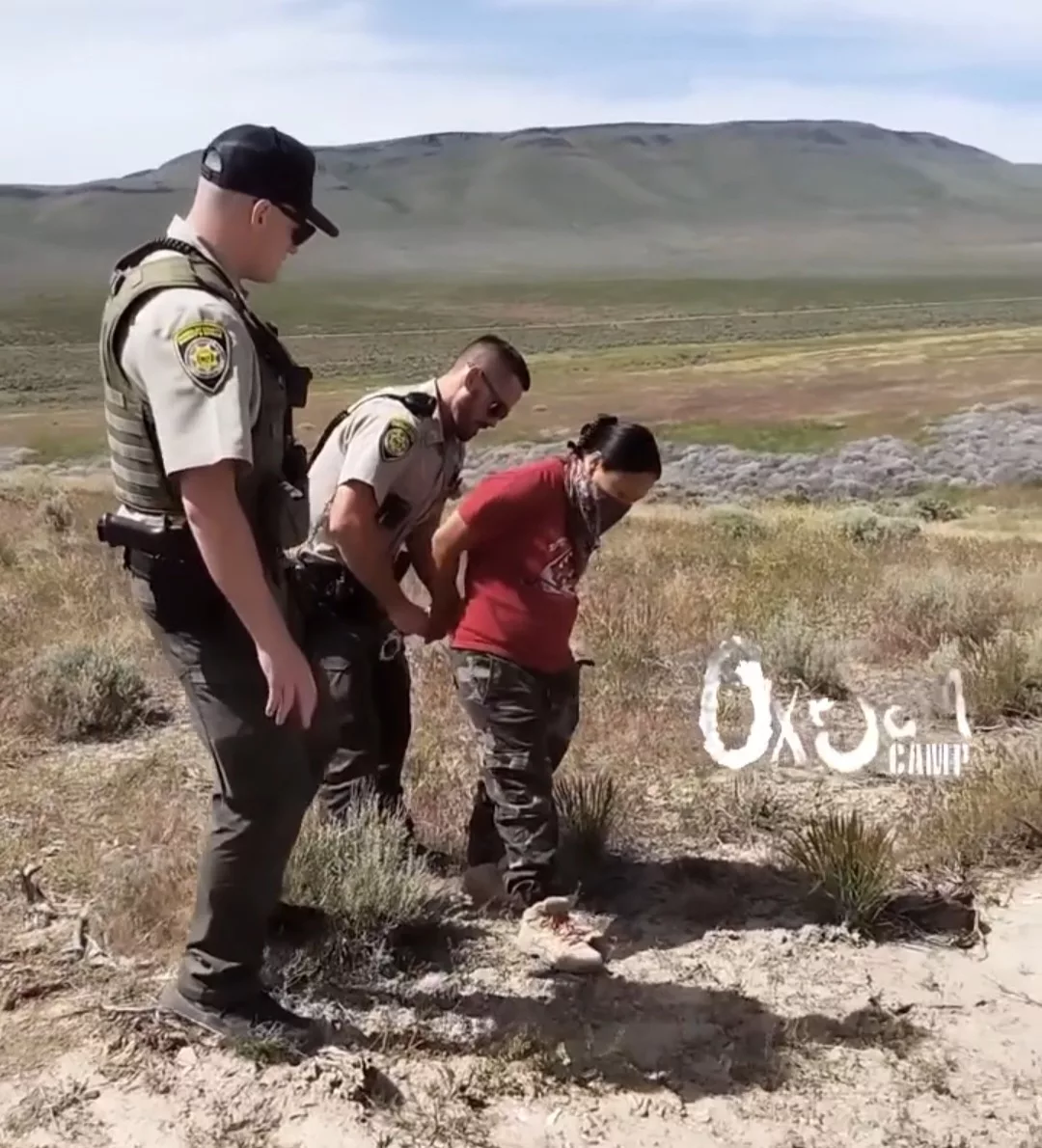

Thursday, June 8th, 2023
Contact: Ox Sam Camp
Email: oxsamcamp@proton.me
OxSam.org
THACKER PASS, NV — On Wednesday morning, the Humboldt County Sheriff’s department on behalf of Lithium Nevada Corporation, raided the Ox Sam Newe Momokonee Nokutun (Ox Sam Indigenous Women’s Camp), destroying the two ceremonial tipi lodges, mishandling and confiscating ceremonial instruments and objects, and extinguishing the sacred fire that has been lit since May 11th when the Paiute/Shoshone Grandma-led prayer action began.
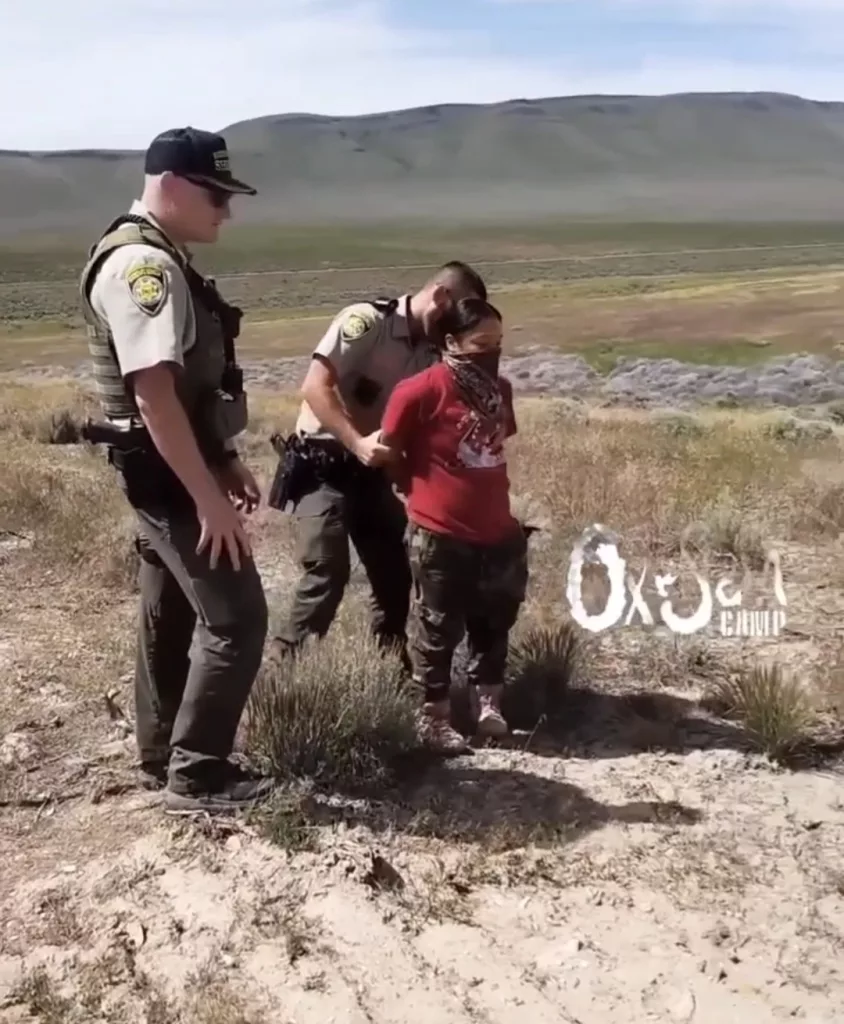

One arrest took place on Wednesday at the direction of Lithium Nevada security. A young Diné female water protector was handcuffed with no warning and loaded into a windowless, pitch-black box in the back of a pickup truck. “I was really scared for my life,” the woman said. “I didn’t know where I was or where I was going, and I know that MMIW is a real thing and I didn’t want to be the next one.” She was transported to Humboldt County Jail, where she was charged with criminal trespass and resisting arrest, then released on bail.
Just hours before the raid, Ox Sam water protectors could be seen for the second time this week bravely standing in the way of large excavation equipment and shutting down construction at the base of Sentinel Rock.
To many Paiute and Shoshone, Sentinel Rock is a “center of the universe,” integral to many Nevada Tribes’ way of life and ceremony, as well as a site for traditional medicines, tools, and food supply for thousands of years. Thacker Pass is also the site of two massacres of Paiute and Shoshone people. The remains of the massacred ancestors have remained unidentified and unburied since 1865, and are now being bulldozed and crushed by Lithium Nevada for a mineral known as “the new white gold.”
Since May 11th, despite numerous requests by Lithium Nevada workers, the Humboldt County Sheriff Department has been reticent and even unwilling to arrest members of the prayer camp, even after issuing three warnings for blocking Pole Creek Road access to Lithium Nevada workers and sub-contractors, while allowing the public to pass through.
“We absolutely respect your guys’ right to peacefully protest,” explained Humboldt County Sheriff Sean Wilkin on May 12th. “We have zero issues with [the tipi] whatsoever… We respect your right to be out here.”
On March 19th the Sheriff arrived again, serving individual fourteen-day Temporary Protection Orders against several individuals at camp. The protection orders were granted by the Humboldt County Court on behalf of Lithium Nevada based on sworn statements loaded with misrepresentations, false claims, and, according to those targeted, outright false accusations by their employees. Still, Ox Sam Camp continued for another week. The tipis, the sacred fire, and the prayers occurred for a total of twenty-seven days of ceremony and resistance.
The scene at Thacker Pass this week looked like Standing Rock, Line 3, or Oak Flat, as Lithium Nevada’s workers and heavy equipment tried to bulldoze and trench their way through the ceremonial grounds surrounding the tipi at Sentinel Rock, and water protectors put their bodies in the way of the destruction, forcing work stoppage on two occasions.
Observers stated that Lithium Nevada’s head of security was directing the Sheriff’s deputies where to go and what to do during the raid.
Lithium Nevada’s ownership and control of Thacker Pass only exists because of the flawed permitting and questionable administrative approvals issued by the Bureau of Land Management (BLM). BLM officials have refused to acknowledge that Peehee Mu’huh is a sacred site to regional Tribal Nations, and have continued to downplay and question the significance of the double massacre through two years of court battles.
Three tribes — the Reno-Sparks Indian Colony, Summit Lake Paiute Tribe, and Burns Paiute Tribe — remain locked in litigation with the Federal Government for permitting the mine. The tribes filed their latest response to the BLM’s Motion to Dismiss on Monday. BLM is part of the Department of the Interior which is led by Deb Haaland (Laguna Pueblo).
On Wednesday, at least five Sheriff’s vehicles, several Lithium Nevada worker vehicles, and two security trucks arrived at the original tipi site that contained the ceremonial fire, immediately adjacent to Pole Creek Road. One camper was arrested without warning, and others were issued with trespass warnings and allowed to leave the area. Once the main camp was secured, law enforcement then moved up to the tipi site at Sentinel Rock, a mile away.
There is a proper way to take down a tipi and ceremonial camp, and then there is the way Humboldt County Sheriffs proceeded on behalf of Lithium Nevada Corporation. Tipis were knocked down, tipi poles were snapped, and ceremonial objects and instruments were rummaged through, mishandled, and impounded. Empty tents were approached and secured in classic SWAT-raid fashion. One car was towed.
As is often the case when lost profits lead to government assaults on peaceful water protectors, Lithium Nevada Corporation and the Humboldt County Sheriffs have begun to claim that the raid was done for the safety of the camp members and for public health.
Josephine Dick (Fort McDermitt Paiute-Shoshone), who is a descendent of Ox Sam and one of the matriarchs of Ox Sam Newe Momokonee Nokutun, made the following statement in response to the raid:
“As Vice Chair of the Native American Indian Church of the State of Nevada, and as a Paiute-Shoshone Tribal Nation elder and member, I am requesting the immediate access to and release of my ceremonial instruments and objects, including my Eagle Feathers and staff which have held the prayers of my ancestors and the Ox Sam camp since the beginning. There was also a ceremonial hand drum and medicines such as cedar and tobacco, which are protected by the American Indian Religious Freedom Act.
In addition, my understanding is that Humboldt County Sherriffs along with Lithium Nevada security desecrated two ceremonial tipi lodges, which include canvasses, poles, and ropes. The Ox Sam Newe Momokonee Nokutun has been conducting prayers and ceremony in these tipis which are also protected by the American Indian Religious Freedom Act. When our ceremonial belongings are brought together around the sacred fire, this is our church. Our Native American church is a sacred ceremony. I am demanding the immediate access to our prayer site at Peehee Mu’huh and the return of our confiscated ceremonial objects.
The desecration that Humboldt County Sherriffs and Lithium Nevada conducted by knocking the tipis down and rummaging through sacred objects is equivalent to taking a bible, breaking The Cross, knocking down a cathedral, disrespecting the sacrament, and denying deacons and pastors access to their places of worship, in direct violation of my American Indian Religious Freedom rights. This violation of access to our ceremonial church and the ground on which it sits is a violation of Executive Order 13007.
The location of the tipi lodge that was pushed over and destroyed is at the base of Sentinel Rock, a place our Paiute-Shoshone have been praying since time immemorial. After two years of our people explaining that Peehee Mu’huh is sacred, BLM Winnemucca finally acknowledged that Thacker Pass is a Traditional Cultural District, but they are still allowing it to be destroyed.”
Josephine and others plan to make a statement on live stream outside the Humboldt County Sheriff’s Office in Winnemucca on the afternoon of Friday, June 9th around 1pm.
Another spiritual leader on the front lines has been Dean Barlese from the Pyramid Lake Paiute Tribe. Despite being confined to a wheelchair, Barlese led prayers at the site on April 25th which led to Lithium Nevada shutting down construction for a day, and returned on May 11th to pray over the new sacred fire as Ox Sam camp was established.
“This is not a protest, it’s a prayer,” said Barlese. “But they’re still scared of me. They’re scared of all of us elders, because they know we’re right and they’re wrong.”
###
Background
Thacker Pass is located in northern Nevada near the Oregon border, where Lithium Nevada Corporation is in the first phase of building a $2 billion open-pit lithium mine which would be the largest of its kind in North America. The lithium is mainly destined for General Motors Corporation’s electric car batteries, which the corporation laughably claims is “green.” Mine opponents call this greenwashing and have stated that “it’s not green to blow up a mountain.”
The U.S. Supreme Court has granted Lithium Nevada corporation and all other business corporations a whole variety of constitutional “rights” that were never meant for business entities. Without these special so-called corporate “rights,” the mine owners would never have been allowed to construct this mine.
Three Native American tribes filed a new lawsuit against the Federal Government over Lithium Nevada Corporation’s planned Thacker Pass lithium mine on February 16, 2023, the latest legal move in the two-and-a-half-year struggle over mining, greenwashing, and sacred land in northern Nevada.
The Tribes notified the 9th Circuit Court of Appeals on May 19th that they mean to appeal their Motion seeking a Preliminary Injunction which was rejected by a lower court in early March. Four environmental groups which lost their case in January have also appealed to the 9th Circuit Court of Appeals, and are expected to be heard in June.
Action
Ox Sam Camp Update: Land Defenders Arrested, Camp Raided After Blocking Excavator
Published
11 months agoon
June 8, 2023By
Rudy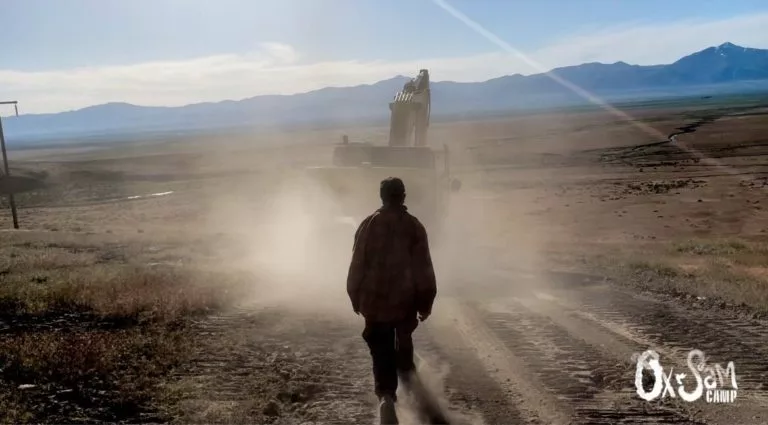

From www.oxsam.org (follow for more updates).
Read the new press release from 6/8/23 here: https://www.indigenousaction.org/ox-sam-camp-raid-update-one-arrested-as-prayer-tipis-are-bulldozed-and-ceremonial-items-confiscated/
6/7/23
First arrests are underway and camp is being raided after land defenders halted an excavator this morning at Thacker Pass.
OROVADA, NV — This morning, a group of Native American water protectors and allies used their bodies to non-violently block construction of the controversial Thacker Pass lithium mine in Nevada, turning back bulldozers and heavy equipment.
The dramatic scene unfolded this morning as workers attempting to dig trenches near Sentinel Rock were turned back by land defenders who ran and put their bodies between heavy equipment and the land.
Now they are being arrested and camp is being raided.
Northern Paiute and Western Shoshone people consider Thacker Pass to be sacred. So when they learned that the area was slated to become the biggest open-pit lithium mine in North America, they filed lawsuits, organized rallies, spoke at regulatory hearings, and organized in the community. But despite all efforts over the last three years, construction of the mine began in March.
That’s what led Native American elders, friends and family, water protectors, and their allies to establish what they call a “prayer camp and ceremonial fire” at Thacker Pass on May 11th, when they setup a tipi at dawn blocking construction of a water pipeline for the mine. A second tipi was erected several days later two miles east, where Lithium Nevada’s construction is defacing Sentinel Rock, one of their most important sacred sites.
Sentinel Rock is integral to many Nevada Tribes’ worldview and ceremony. The area was the site of two massacres of Paiute and Shoshone people. The first was an inter-tribal conflict that gave the area it’s Paiute name: Peehee Mu’huh, or rotten moon. The second was a surprise attack by the US Cavalry on September 12th, 1865, during which the US Army slaughtered dozens. One of the only survivors of the attack was a man named Ox Sam. It is some of Ox Sam’s descendants, the Grandmas, that formed Ox Sam Newe Momokonee Nokotun (Indigenous Women’s Camp) to protect this sacred land for the unborn, to honor and protect the remains of their ancestors, and to conduct ceremonies. Water protectors have been on-site in prayer for nearly a month.
On Monday, Lithium Nevada Corporation also attempted to breach the space occupied by the water protectors. As workers maneuvered trenching equipment into a valley between the two tipis, water protectors approached the attempted work site and peacefully forced workers and their excavator to back up and leave the area. According to one anonymous land defender, Lithium Nevada’s action was “an attempted show of force to fully do away with our tipi and prayer camp around Sentinel Rock.”


Ranchers, recreationists, and members of the public have been allowed to pass without incident and water protectors maintain friendly relationships with locals. Opposition to the mine is widespread in the area, and despite repeated warnings from the local Sheriff, there have been no arrests. Four people, including Dorece Sam Antonio of the Fort McDermitt Paiute-Shoshone Tribe (an Ox sam descendant) and Max Wilbert of Protect Thacker Pass, have been targeted by court orders barring them from the area. They await a court hearing in Humboldt County Justice Court.
“Lithium Nevada is fencing around the sacred site Sentinel Rock to disrupt our access and yesterday was an escalation to justify removal of our peaceful prayer camps,” said one anonymous water protector at Ox Sam Camp. “Lithium Nevada intends to desecrate and bulldoze the remains of the ancestors here. We are calling out to all water protectors, land defenders, attorneys, human rights experts, and representatives of Tribal Nations to come and stand with us.”
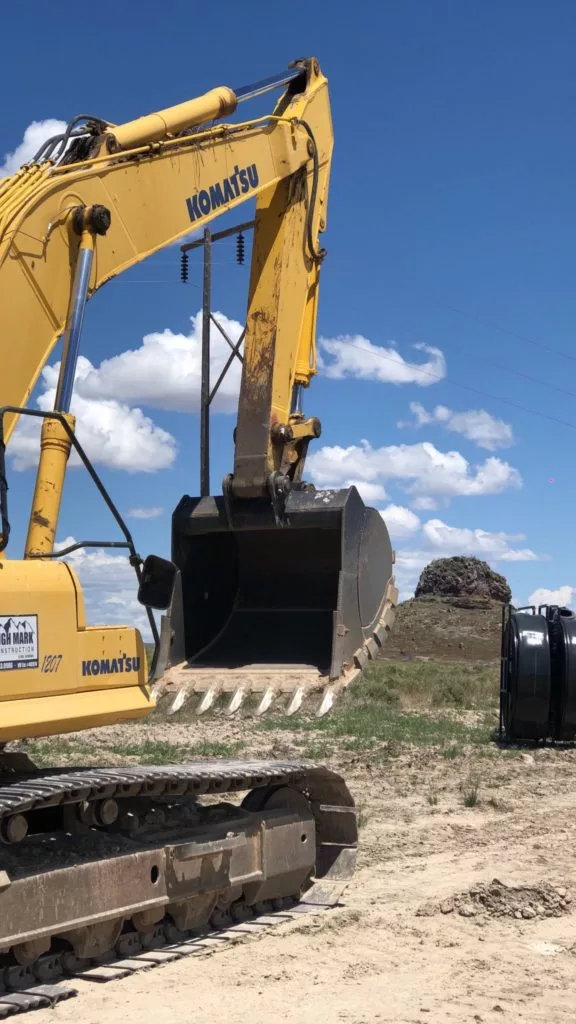

“I’m being threatened with arrest for protecting the graves of my ancestors,” says Dorece Sam Antonio. “My great-great Grandfather Ox Sam was one of the survivors of the 1865 Thacker Pass massacre that took place here. His family was killed right here as they ran away from the U.S. Army. They were never buried. They’re still here. And now these bulldozers are tearing up this place.”
Another spiritual leader on the front lines has been Dean Barlese, a spiritual leader from the Pyramid Lake Paiute Tribe. Despite being confined to a wheelchair, Barlese led prayers at the site on April 25th (shutting down construction for a day) and returned on May 11th.
“I’m asking people to come to Peehee Mu’huh,” Barlese said. “We need more prayerful people. I’m here because I have connections to these places. My great-great-great grandfathers fought and shed blood in these lands. We’re defending the sacred. Water is sacred. Without water, there is no life. And one day, you’ll find out you can’t eat money.”
The 1865 Thacker Pass massacre is well documented in historical sources, books, newspapers, and oral histories. Despite the evidence but unsurprisingly, the Federal Government has not protected Thacker Pass or even slowed construction of the mine to allow for consultation to take place with Tribes. In late February, the Federal Government recognized tribal arguments that Thacker Pass is a “Traditional Cultural District” eligible for the National Register of Historic Places. But that didn’t stop construction from commencing.
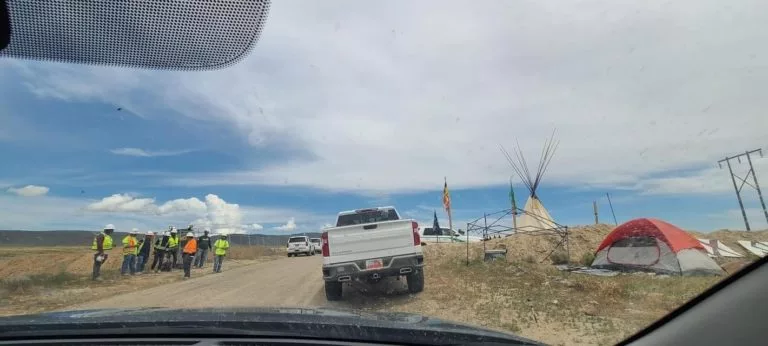

“This is not a protest, it’s a prayer,” said Barlese. “But they’re still scared of me. They’re scared of all of us elders, because they know we’re right and they’re wrong.”
#policestate
O’odham Executed by Border Patrol: Statement by Raymond Mattia Family
Published
11 months agoon
May 25, 2023By
Rudy

Raymond Mattia of the Tohono O’odham Nation was executed by US border patrol agents on May 18th at his home. He was reportedly shot 38 times.
A peaceful gathering to support all victims of the
unmonitored violent actions of the Border Patrol and other agencies will be held at The Border
Patrol Station in Why, Az, and Tucson on Golf Links Road this Saturday, May 27th, from
10:00am-Noon.
For more information please visit: https://bsnorrell.blogspot.com/2023/05/us-border-patrol-shoots-tohono-oodham.html
Statement by Mattia Raymond’s family:
We have been trying to find the strength to write this statement. This tragedy is so
grievous because it is apparent what had happened. Raymond called for help and, in turn, was
shot down at his doorstep. Raymond’s rights were violated by the authorities whom we trust to
protect our Nation. Improper and unprofessional actions of the agencies involved were witnessed
by family members present near the crime scene. Loved ones sat in agony, not knowing of
Raymond’s condition until they were told that he had passed hours later. Raymond lay in front of
his home for seven hours before a coroner from Tucson arrived.
In our eyes and hearts, we believe that Raymond was approached with excessive and
deadly force that took his life. He was a father, brother, uncle, friend, and an involved
community member. Raymond always fought for what was right, and he will continue to fight
even after his death. This is not an isolated incident, but it should bring awareness of the
oppression our people live through.
We want to thank so many of you for your condolences and support. A GoFundMe for
defense funds will be available soon. A peaceful gathering to support all victims of the
unmonitored violent actions of the Border Patrol and other agencies will be held at The Border Patrol Station in Why, Az, and Tucson on Golf Links Road this Saturday, May 27th, from 10:00am-Noon.
Contact for support: justiceforraymattia@gmail.com
Get updates via email, sign up here:


Indigenous Action Podcast
- Indigenous Action Podcast Ep. 18: No Settler Future An Anti-Year in Review (sorta)
- Indigenous Action Podcast Episode 17: Decolonization isn’t a Holiday
- Indigenous Action Podcast Episode 16: Fuck a Valentine, Indigenous Abolition Feminism
- Indigenous Action Podcast Episode 15: 15th Annual No Thanks, No Giving: Indigenous Anarchism
- Indigenous Action Podcast Episode 14: Queering #MMIWG2ST
Popular Posts
-



 Commentary & Essays10 years ago
Commentary & Essays10 years agoAccomplices Not Allies: Abolishing the Ally Industrial Complex
-

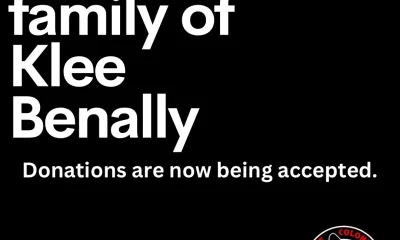

 Feature Front4 months ago
Feature Front4 months agoThe family of Klee Benally thanks you for the donations!
-



 anti-colonial4 years ago
anti-colonial4 years agoVoting is Not Harm Reduction – An Indigenous Perspective
-



 anti-colonial4 years ago
anti-colonial4 years agoRethinking the Apocalypse: An Indigenous Anti-Futurist Manifesto
-



 anti-colonial2 years ago
anti-colonial2 years agoUnknowable: Against an Indigenous Anarchist Theory – Zine
-



 #nonukes10 years ago
#nonukes10 years agoIndigenous Elders and Medicine Peoples Council Statement on Fukushima
-

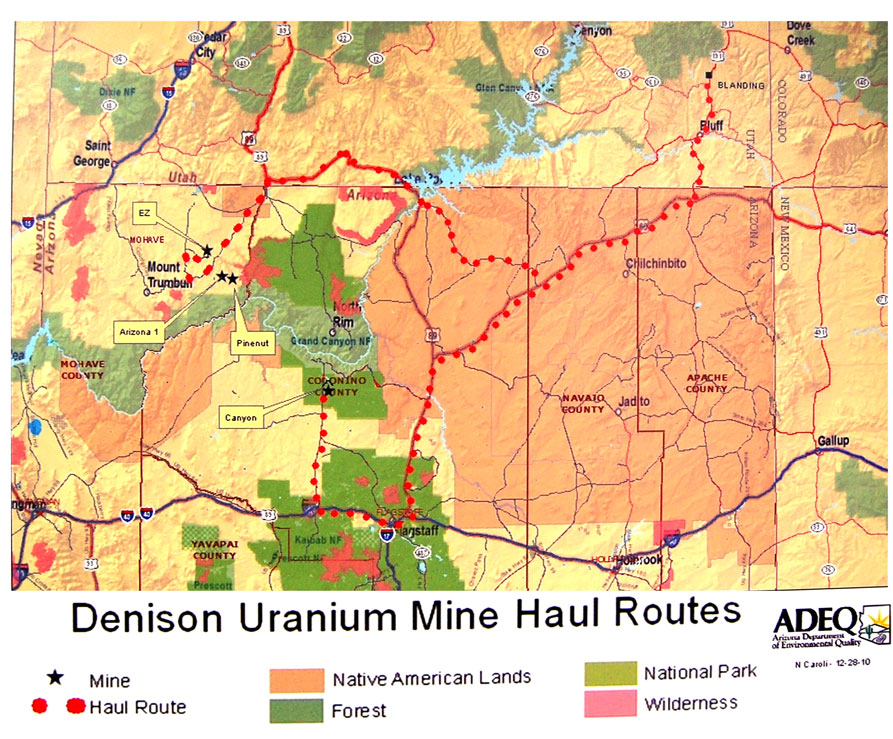

 #nonukes14 years ago
#nonukes14 years agoUranium Mining Begins Near Grand Canyon
-



 anti-colonial5 months ago
anti-colonial5 months agoNew Book: No Spiritual Surrender, Klee Benally

